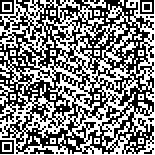王莉,王纯,夏楠,等.脊柱侧凸康复机器人的研制及对冠状面畸形的即刻矫正效果初探[J].中华物理医学与康复杂志,2021,43(10):899-903
扫码阅读全文

|
| 脊柱侧凸康复机器人的研制及对冠状面畸形的即刻矫正效果初探 |
|
| |
| DOI:10.3760/cma.j.issn.0254-1424.2021.10.008 |
| 中文关键词: 青少年特发性脊柱侧凸 康复 生物力学现象 超声 |
| 英文关键词: Adolescent idiopathic scoliosis Rehabilitation Biomechanics Ultrasonography Robot-assisted therapy |
| 基金项目: |
|
| 摘要点击次数: 5186 |
| 全文下载次数: 6087 |
| 中文摘要: |
| 目的 探讨自主研发的脊柱侧凸康复机器人在青少年特发性脊柱侧凸(AIS)中应用的安全性、有效性及合适的治疗处方。 方法 脊柱侧凸康复机器人基于三维同步矫正理念设计,由闭环气动控制系统以及多节段躯干、骨盆和上肢固定装置组成。选取AIS患者18例,首先在最大耐受力下进行30 min的机器人治疗,采用三维超声评估患者在治疗前、治疗30 s、治疗5 min、治疗30 min、30 min治疗结束即刻和治疗结束5 min时的脊柱棘突角和棘突角矫正率的变化;之后分别在10%、15%、20%、25%和30%体重横向矫正力下进行30 s的机器人治疗,并采用三维超声评估不同力作用下患者脊柱棘突角和棘突角矫正率的变化。观察和记录整个研究中的不良反应。 结果 自制三维脊柱侧凸康复机器人运行平稳,可实现智能精准矫正,未见患者出现严重不良反应。机器人治疗30 s、5 min和30 min后的平均棘突角矫正率呈时间递增效应(P<0.001),且治疗30 min时达103.73%。自10%体重矫正力开始,随着矫正力大小的增加,平均棘突角矫正率逐渐提高(P≤0.001);轻度AIS(Cobb角<25°)在25%体重横向矫正力下的平均棘突角矫正率达103.97%(实现完全矫正),而中度AIS(Cobb角≥25°)患者的矫正率也达到64.52%。 结论 脊柱侧凸康复机器人治疗是安全和即刻有效的,轻度AIS和中度AIS患者分别在25%体重和25%以上体重的横向矫正力下取得较为理想的矫正效果。 |
| 英文摘要: |
| Objective To explore the appropriate use of a self-developed scoliosis rehabilitation robot in treating adolescent idiopathic scoliosis (AIS), and also its safety and effectiveness. Methods The scoliosis rehabilitation robot consists of a closed-loop pneumatic control system and multi-segment torso, pelvis and upper extremity fixation devices. It provides three-dimensional synchronous correction. Eighteen AIS subjects first received 30min of robot-assisted treatment using the maximum tolerable orthotic force. The angles of their spinal processes were evaluated using ultrasound before the treatment and after 30 seconds, 5 minutes and 30 minutes of treatment, then 5min later. In a second 30sec course of treatment the transverse orthotic force was 10%, 15%, 20%, 25%, and 30% of the patient′s body weight. Any adverse effects were observed and recorded. Results The robot ran smoothly and could apply intelligent and precise correction. No severe adverse effects were reported. The mean correction of the spinal process angles showed a significant cumulative effect with treatment time, reaching 104% at 30min. The mean process angle correction increased with the applied force. Force at 25% of the patient′s weight produced an average correction of 104% in patients with mild AIS and 65% in those whose AIS was moderate. Conclusion The scoliosis rehabilitation robot is safe and immediately effective. Setting the transverse force at 25% of a patient′s weight gives the best corrective effect with mild AIS. Moderate AIS requires more force. |
|
查看全文
查看/发表评论 下载PDF阅读器 |
| 关闭 |